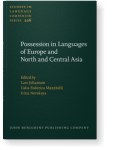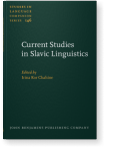Timofey Arkhangelskiy
List of John Benjamins publications for which Timofey Arkhangelskiy plays a role.
Articles
2023 Reported speech and its extensions in Beserman Journal of Uralic Linguistics 2:2, pp. 214–241 | Article
This paper presents a descriptive account of reported speech, understood in terms of Spronck & Nikitina (2019), in Beserman (Uralic > Permic). Two phenomena are described in particular. First, it is demonstrated that, although Beserman generally prefers the direct speech strategy, the… read more
2020 Verbal borrowability and turnover rates Diachronica 37:4, pp. 451–473 | Article
Conventional wisdom holds that verbs are more difficult to borrow than nouns. Recent studies have supported this claim, inferring it from the fact that synchronically almost every language studied contains a larger proportion of identifiable borrowings among nouns than among verbs. In this paper,… read more
2019 Grammaticalization of possessive markers in the Beserman dialect of Udmurt Possession in Languages of Europe and North and Central Asia, Johanson, Lars, Lidia Federica Mazzitelli and Irina Nevskaya (eds.), pp. 291–312 | Chapter
The paper is focused on the functions of possessive suffixes in the Beserman dialect of Udmurt. Considering the data from the Beserman corpus of oral texts we find the parameters influencing the presence/omission of the possessive suffixes in the contexts of possessive (alienable and inalienable)… read more
2013 Polysemy Patterns in Russian Adjectives and Adverbs: A corpus-oriented database Current Studies in Slavic Linguistics, Kor Chahine, Irina (ed.), pp. 313–322 | Article
The paper presents a research tool for studying semantic change and polysemy patterns in Russian adjectives and adverbs. It is based on a corpus analysis of high-freqency polysemous units. For each of them we describe the meanings it can have, assign to each meaning a corresponding taxonomic class,… read more



